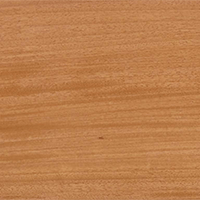This is a placeholder for the Yext Knolwedge Tags. This message will not appear on the live site, but only within the editor. The Yext Knowledge Tags are successfully installed and will be added to the website.
,
This is a placeholder for the Yext Knolwedge Tags. This message will not appear on the live site, but only within the editor. The Yext Knowledge Tags are successfully installed and will be added to the website.
This is a placeholder for the Yext Knolwedge Tags. This message will not appear on the live site, but only within the editor. The Yext Knowledge Tags are successfully installed and will be added to the website.
,
This is a placeholder for the Yext Knolwedge Tags. This message will not appear on the live site, but only within the editor. The Yext Knowledge Tags are successfully installed and will be added to the website.
Jequitiba (Cariniana pyriformis and Cariniana)
Over 75 Years of Experience | Family Owned | Freight Shipping Available
This is a placeholder for the Yext Knolwedge Tags. This message will not appear on the live site, but only within the editor. The Yext Knowledge Tags are successfully installed and will be added to the website.
Over 75 Years of ExperienceFamily OwnedFreight Shipping Available
Jequitiba (Cariniana pyriformis and Cariniana)
Jequitiba works well with general construction and carpentry, furniture components, shipbuilding, flooring, veneer for plywood, and turnery.
Family:
Lecythidaceae
Other Common Names: Abarco (Colombia), Bacu (Venezuela), Ceru, Jequitiba rosa, Jequitiba amerella, Tauary (Brazil) and Chilean Mahogany.
Distribution: A genus of about 10 species distributed from eastern Peru and northern Bolivia through central Brazil to Venezuela and Colombia. Very common in forest of northern Colombia growing on lower slopes and well-watered valleys.
Other Common Names: Abarco (Colombia), Bacu (Venezuela), Ceru, Jequitiba rosa, Jequitiba amerella, Tauary (Brazil) and Chilean Mahogany.
Distribution: A genus of about 10 species distributed from eastern Peru and northern Bolivia through central Brazil to Venezuela and Colombia. Very common in forest of northern Colombia growing on lower slopes and well-watered valleys.
The Tree
A large tree, frequently 100 to 130 feet in height, with trunk diameters often 4 to 6 feet in diameter, boles are clear to 80 feet; large buttresses; well-formed stems.
The Wood
General Characteristics:
Heartwood reddish or purplish brown, sometimes with dark streaks usually not sharply demarcated from the pale brown sapwood; luster medium; texture medium; grain straight to interlocked; without distinctive odor or taste.
Weight: Basic specific gravity (ovendry weight/green volume) 0.46; air-dry density 35 pcf.
Working Properties: Working properties generally satisfactory with only a slight blunting effect on cutting edges; but species in the grouping are also reported to cause rapid dulling of cutters. Silica is estimated to be in excess of 0.05%. Veneers reported to be cut without difficulty.
Durability: Heartwood reported to be durable, particularly deeply colored material; has good resistance to dry-wood termite attack.
Preservation: Heartwood is reported to be extremely resistant to preservative treatment; sapwood is permeable.
Uses: General construction and carpentry, furniture components, shipbuilding, flooring, veneer for plywood, and turnery.
Thicknesses: Available in 4/4, 6/4, and 8/4 Air Dried and Kiln Dried.
Grade: Select & Better
Weight: Basic specific gravity (ovendry weight/green volume) 0.46; air-dry density 35 pcf.
Drying and Shrinkage:
Air-dries rapidly with only a slight tendency to warp or check. Kiln schedule T3-D2 is suggested for 4/4 stock and schedule T3-D1 for 8/4. Shrinkage green to ovendry: radial 2.8%; tangential 5/4%; volumetric 9.0%. Reported to have good dimensional stability after manufacture.
Working Properties: Working properties generally satisfactory with only a slight blunting effect on cutting edges; but species in the grouping are also reported to cause rapid dulling of cutters. Silica is estimated to be in excess of 0.05%. Veneers reported to be cut without difficulty.
Durability: Heartwood reported to be durable, particularly deeply colored material; has good resistance to dry-wood termite attack.
Preservation: Heartwood is reported to be extremely resistant to preservative treatment; sapwood is permeable.
Uses: General construction and carpentry, furniture components, shipbuilding, flooring, veneer for plywood, and turnery.
Thicknesses: Available in 4/4, 6/4, and 8/4 Air Dried and Kiln Dried.
Grade: Select & Better
| Moisture Content | Bending Strength (psi) | Modules of Elasticity (1000 psi) | Max Crushing Strength (psi) |
|---|---|---|---|
| 12% (42) | 13,800 | 1,410 | 7,100 |
| Green (30) | 10,200 | 1,530 | 4,620 |
| 15% | 12,500 | --- | 6,320 |
Air-dry Janka side hardness 1,020 pound Amsler air-dry toughness is 195 in. – lb (2-cm specimen).
Jequitiba
Thank you for contacting us.
We will get back to you as soon as possible.
We will get back to you as soon as possible.
Oops, there was an error sending your message.
Please try again later.
Please try again later.
VISIT US
,
This is a placeholder for the Yext Knolwedge Tags. This message will not appear on the live site, but only within the editor. The Yext Knowledge Tags are successfully installed and will be added to the website.
CALL US
HOURS
This is a placeholder for the Yext Knolwedge Tags. This message will not appear on the live site, but only within the editor. The Yext Knowledge Tags are successfully installed and will be added to the website.
Hi. Do you need any help?
Privacy Policy
| Do Not Share My Information
| Conditions of Use
| Notice and Take Down Policy
| Website Accessibility Policy
© 2024
The content on this website is owned by us and our licensors. Do not copy any content (including images) without our consent.


Share On: